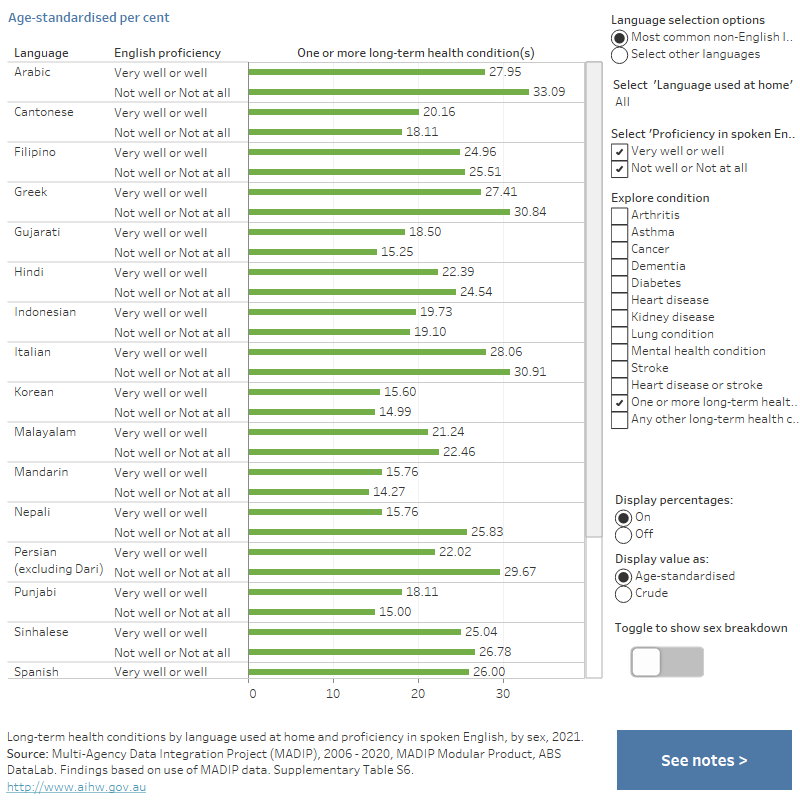Language used at home and proficiency in spoken English
Figure 6: Long-term health conditions by language used at home and proficiency in spoken English, by sex, 2021
This graph shows the crude and age-standardised percentages of people reporting long-term health conditions in the 2021 Census, by language used at home and sex. The age-standardised percentages of reporting most individual conditions were generally higher for people with low English proficiency than those for individuals with high English proficiency. Overall, there were variations between each condition, language used at home and proficiency in spoken English.

People who spoke Arabic, Italian and Greek at home had the highest prevalence of one or more long-term condition(s) for those with high English proficiency (people who spoke English very well or well) and low English proficiency (people who did not speak English well or at all).
Among the 20 most common non-English language groups, the differences observed across levels of proficiency were similar to those observed in the analysis using the ‘proficiency in spoken English’ variable alone.
For some conditions (such as cancer and asthma), people with high English proficiency generally had a higher prevalence, compared with people with low English proficiency. For example, the prevalence of asthma was higher for people with high English proficiency among 19 out of the 20 most common non-English language groups (except Nepali).


